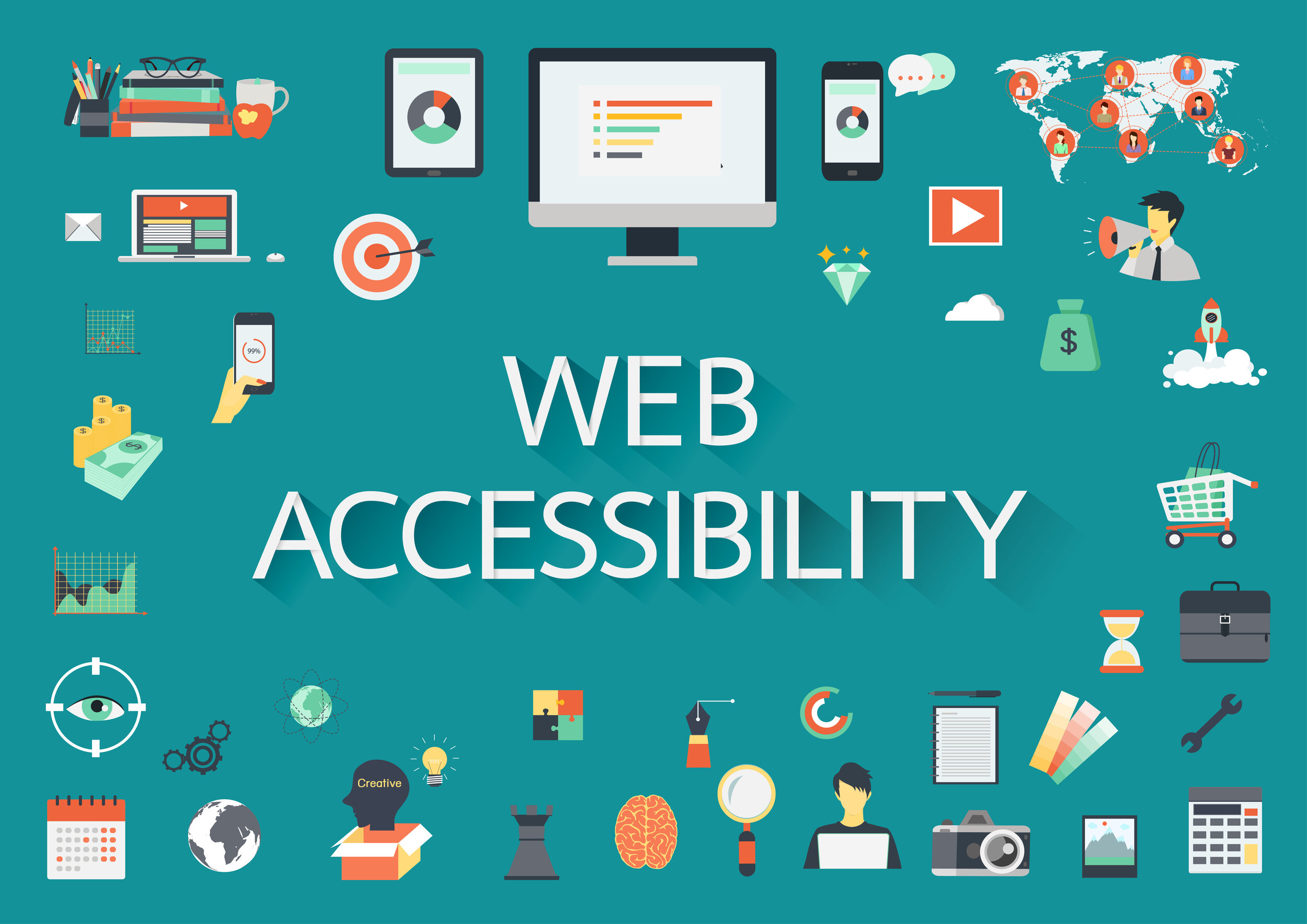Real-Time Information Leads to Better School Website Accessibility

School website accessibility is a priority for most school and district webmasters. But it’s not always easy to know where to start.
To improve the accessibility of your site, you first have to know how accessible your site is currently and pinpoint where the existing problems lie. Then, you need continual feedback to let you know how you are doing as your site evolves. A built-in accessibility checker that is native to your CMS can do both.
Getting a Baseline Website Accessibility Assessment
The first step to improving the accessibility of your school website is to get a good baseline assessment. A baseline assessment acts as a reference point when making accessibility changes. If the first time I run the report I have 37 accessibility errors flagged, and after making changes I am down to 23, I know I have made progress towards making my site more accessible.
Many schools rely on free third-party tools such as the WAVE web accessibility evaluation tool from WebAIM or the Siteimprove browser extension. These tools typically provide the total number of accessibility errors found for each page, broken down into categories such as missing alt-text, empty links, contrast issues, and heading errors. You may be able to click on each error alert to be taken to the place in the page it has tagged. However, by themselves, they don’t provide everything webmasters need to address accessibility problems on their school websites.
The Problem with Third-Party Accessibility Tools
While these third-party accessibility tools have value as a quick snapshot, it isn’t easy to translate the information on the reports into the steps needed to actually improve the accessibility of your website. The reports are often difficult for non-experts to understand. And the information they provide may not be easily actionable.
Third-party accessibility checkers tend to be geared towards software developers and accessibility experts with a deep understanding of Web Content Accessibility Guidelines (WCAG). Webmasters without that background are likely to struggle to interpret the reports and determine which alerts require their attention.
Beyond being difficult to understand, the reports generated by these tools generally have several problems for webmasters.
They don’t distinguish between actionable (content-based) and non-actionable (platform-based) accessibility errors. The reports typically return both errors that are within the power of the webmaster to fix (such as missing alt-text) and problems that are inherent to the platform itself (such as missing keyboard focus or ARIA tagging). The tool will not be able to tell you whether the issues it finds are fixable within the limitations of the CMS you are using.
They don’t provide guidance in how to address identified errors. Error reports are often fairly cryptic for non-experts to interpret. Even when the error is pinpointed on the page, it may not be clear where to go in the CMS to fix it. Because the tool is unrelated to the CMS, it will not be able to show you where to go within your CMS and what you need to do to remedy each error code—and their support desk (if they have one) won’t be able to provide platform-specific help, either. For errors like “contrast ratio,” there may not be guidance on what the ratio should be for optimal accessibility. Fixing the accessibility problems identified in the report may require extensive trial and error.
The don’t provide real-time feedback. Third-party accessibility tools are designed to run on a published webpage and won’t check content as it is being developed. That means content creators are still in the dark when they are creating new content. By the time the accessibility report is rerun, inaccessible content has already been pushed live to the school website and the content creator has moved on to other projects.
The Benefit of Built-in Accessibility Tools
eChalk has taken a different approach to school website accessibility. Instead of requiring our customers to rely on third-party web accessibility tools, we’ve built one right into the eChalk CMS.
eChalk GUIDE is a website content accessibility checker that is native to the eChalk CMS. This provides a number of advantages for webmasters and content creators.
The report only shows accessibility errors that are within your power to fix. The eChalk CMS takes care of platform accessibility issues (like ARIA tagging, keyboard focus, and contrast ratios) automatically. GUIDE only shows you content accessibility issues that are the responsibility of webmasters and content creators.
GUIDE shows you how to fix identified issues within the eChalk CMS. Webmasters can easily identify all of the inaccessible content on their website. The report not only shows you exactly where the problem is on the webpage, but also points you to the right place in the CMS and gives you easy-to-understand, plain-English instructions for fixing each one. Because the tool is fully integrated with the CMS, users can simply click a button right inside the error code to be taken to the right place to fix it.
It identifies content accessibility problems before a page is published. With our built-in tool, you don’t have to wait to get a report after the content is live. GUIDE provides real-time, point-of-use instruction as new content is developed so inaccessible content is never pushed live. Over time, GUIDE instills website accessibility best practices for all content creators, so the entire burden isn’t on the school webmaster.
Real-time, actionable information and guidance that is specific to the CMS makes website accessibility easy for everyone creating content on the site. A built-in accessibility checker takes the guesswork out of school website accessibility and reduces the time and labor required to maintain an accessible site. That lets the people maintaining your website focus on creating great content with the assurance that it will be accessible for everyone.